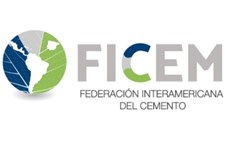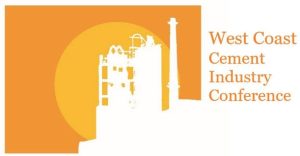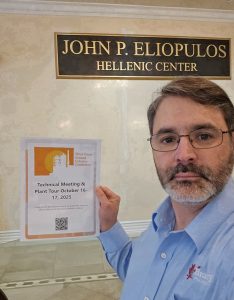 Recent industry events — notably the FICEM Technical Congress in Lima, Peru, and the West Coast Cement Conference — have underscored the cement sector’s accelerating commitment to optimizing grinding processes and expanding the use of Supplementary Cementitious Materials (SCMs) as part of the global drive toward carbon reduction.
Recent industry events — notably the FICEM Technical Congress in Lima, Peru, and the West Coast Cement Conference — have underscored the cement sector’s accelerating commitment to optimizing grinding processes and expanding the use of Supplementary Cementitious Materials (SCMs) as part of the global drive toward carbon reduction.
___________________________

Evolving Cement Grinding Strategies to Reduce Carbon Footprints
A great deal of focus is currently directed toward several aspects of cement grinding. With global legislation pushing plants to reduce their carbon footprint, producers are exploring a range of strategies to meet efficiency and sustainability targets. Some plants are evaluating the migration from older, inefficient grinding equipment to modernized systems, incorporating high-efficiency classifiers or other incremental modifications. Others are considering the replacement of traditional ball mills with more energy-efficient solutions like pendulum roller mills or other types of VRMs to improve overall performance and reduce specific energy consumption.
The use of SCMs for clinker substitution continues to gain traction as a key decarbonization strategy. Reduced clinker content directly translates to lower fuel and CO₂ emissions; however, achieving consistent product quality often requires finer grinding and stricter control of particle size distribution. This has renewed interest in the comparative performance of separate grinding versus co-grinding of cement constituents. Additionally, research is increasingly focused on how grinding parameters influence cement reactivity and water demand in concrete, revealing important links between process efficiency, hydration kinetics, and overall mix performance.
_______________________________
The Impact of Material Behavior on SCM-Rich Cement Grinding Mechanisms
During the FICEM conference, Professor Jorge Iván Tobón from the National University of Colombia (UNAL) offered valuable insights into the behavior of SCM-rich cements. He noted that cements with higher contents of clays or pozzolans require grinding predominantly by shear rather than impact. While ball mills are capable of achieving very fine product sizes, their high energy consumption makes them less cost-effective in modern cement production. This limitation becomes even more significant as plants increase their SCM content, diminishing the traditional advantages of impact-based grinding systems.
______________________________

Complementary Cement Grinding Systems and Efficiency Gains
In this evolving context, the concept of complementary grinding systems offers a promising pathway for both performance and energy optimization. By integrating a Bradley pendulum roller mill alongside an existing ball mill circuit, plants can achieve enhanced flexibility and efficiency. Operating mills in parallel, rather than in a pre-grinding series configuration, provides several benefits — including improved throughput balance, reduced overall energy consumption, and better adaptability to varying feed compositions. The “complementary” approach is particularly well-suited to smaller, modular installations, offering a cost-effective alternative to full system replacement while supporting the industry’s transition toward low-carbon production.
Within this framework, Bradley Pulverizer’s BM0 Mill has also attracted attention as a dedicated small-scale grinding solution. Designed for output capacities below 1 ton per hour, the BM0 is particularly valuable as a research and development tool for startups, universities, and cement producers seeking to test different product blends, SCM combinations, or process parameters under controlled conditions. Its compact design and precision control make it ideal for experimental grinding campaigns, enabling users to evaluate performance variables before scaling up to full production systems. As the cement industry increases its focus on material innovation and process flexibility, equipment such as the BM0 Mill plays a vital role in bridging laboratory insights with industrial application.
_________________________________
Toward a Smarter, More Sustainable Grinding Paradigm
Both the FICEM and West Coast conferences demonstrated that cement grinding is evolving from a purely mechanical process into a precision-driven, materials-engineering discipline. The intersection of advanced grinding technology, SCM utilization, and performance-based product specifications is reshaping the competitive landscape. As the industry continues to innovate, the integration of complementary grinding systems and the adoption of shear-dominant comminution methods represent tangible steps toward achieving the twin goals of energy efficiency and carbon reduction.
The alignment of research, technology, and operational practice seen across these global forums suggests a clear direction forward: the optimization of grinding will remain central to the cement industry’s broader sustainability agenda.
_________________________________
Contact Us to discuss the ways we can improve efficiencies in your cement manufacturing process
